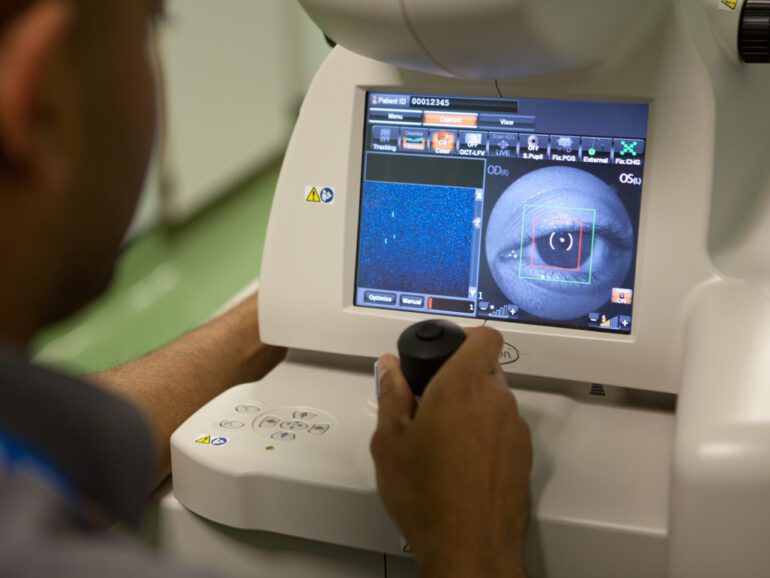TL;DR:
- Moorfields Eye Hospital and UCL Institute of Ophthalmology unveil RETFound, a groundbreaking AI model.
- RETFound, trained on 1.6 million retinal images, identifies sight-threatening eye diseases and predicts general health challenges.
- It’s freely available for global institutions and poised to drive blindness prevention research.
- Published results in Nature underline its significance.
- Professor Pearse Keane sees the potential to expand its application to numerous sight-threatening eye diseases.
- Developed with NHS data and academic expertise, setting a global AI healthcare standard.
Main AI News:
In a groundbreaking development, Moorfields Eye Hospital, in collaboration with the University College London (UCL) Institute of Ophthalmology, has unveiled RETFound, a pioneering artificial intelligence (AI) foundation model tailored specifically for the field of ophthalmology. This remarkable achievement signals a monumental leap in the realm of medical technology, as RETFound has been meticulously trained on an extensive dataset comprising 1.6 million retinal images sourced from Moorfields Eye Hospital in London, establishing itself as a first-of-its-kind innovation in the world of healthcare.
The primary function of RETFound is to identify sight-threatening eye diseases, a task it accomplishes with remarkable precision. However, what sets this AI model apart is its ability to venture beyond the confines of ophthalmology. RETFound possesses the unique capability to predict broader health challenges, including heart attacks, strokes, and Parkinson’s disease. This multifaceted approach underscores its potential to revolutionize healthcare diagnostics on a global scale.
This groundbreaking initiative was brought to fruition with a clear vision in mind – to detect markers of disease from retinal images across diverse populations. The implications of this innovation are profound, and the developers behind RETFound are committed to making it accessible to institutions worldwide at no cost. The hope is that over the ensuing years, RETFound will emerge as the cornerstone of all research endeavors aimed at preventing blindness through the power of AI.
The findings and capabilities of RETFound have been meticulously documented in the prestigious journal Nature, cementing its status as a pioneering contribution to the field of medical technology. Professor Pearse Keane, the senior author of the article, shared his insights, stating, “This is another significant stride towards leveraging AI to redefine 21st-century eye examinations, not only within the UK but on a global scale. We have showcased several exemplary conditions where RETFound can be applied, yet its potential extends to hundreds of other sight-threatening eye diseases that remain unexplored.”
It’s worth noting that RETFound’s training relied on a meticulously curated dataset of 1.6 million images sourced from Moorfields Eye Hospital. This endeavor was made possible through the utilization of advanced AI tools and infrastructure provided by INSIGHT, the National Health Service-led health data research hub for eye health, situated at Moorfields. The hub’s robust computing capabilities and AI expertise trace their roots back to a pivotal 2016 collaboration between Moorfields and DeepMind, now known as Google DeepMind.
Professor Keane added, “If the UK can harness high-quality clinical data from the NHS, coupled with cutting-edge computer science expertise from its universities, it stands poised to become a global leader in AI-enabled healthcare. We believe that our work sets a precedent for how this can be achieved.”
Conclusion:
RETFound’s emergence signals a transformative shift in the healthcare landscape. Its multifaceted AI capabilities, freely accessible to institutions worldwide, have the potential to reshape disease detection and prevention, positioning the UK as a frontrunner in AI-enabled healthcare. This innovation opens doors for new market opportunities and partnerships in the AI healthcare sector.

